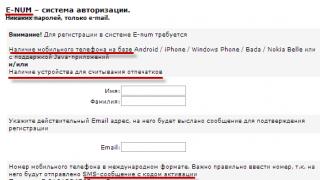Good day!
Inspired by a recent post - "Managing the list of 1C 8.2 databases using Active Directory", I will share an alternative solution to this problem:
- without using scripts
- without editing 1C files (ibases.v8i, 1CEStart.cfg)
This method is convenient only if the user works with a small number of 1C bases (from one to ten), since it involves placing a separate shortcut on the desktop for each base.
Step 1.
Let's create a group in AD that includes a list of computers on which the 1C client is installed - it will include the servers of the terminal farm, as well as computers on which the 1C client is installed. In fact, you don't have to, but we'll use this group as an additional filter:
Step 2
Let's create groups in AD for users of 1C databases:
You may notice that a separate group is created to launch the database with other parameters (in this case, in thick client mode).
Step 3
Create a group policy that manages user shortcuts:
Unfortunately, for 1C there is not yet a client version for the x64 platform, so the default location of the client depends on the bitness of the platform. For version 1C 8.3 on a 32-bit version of Windows, the client is installed in %ProgramFiles%\1cv8\common\1cestart.exe, and on 64-bit Windows - %ProgramFiles(x86)%\1cv8\common\1cestart.exe
Now let's take a closer look at the creation of each element.
On the "General" tab, set the parameters for connecting to the database, the location of the shortcut (in this case, the desktop). An example of creating a shortcut for the Win x64 platform
A small digression for those who are just planning the transition from the 1C 8.2 platform to 8.3:
In the "General Settings" tab, let's target our shortcut to the AD groups we made earlier:
Setting for Win x86 platform:
And for Win x64:
Adding a new database comes down to creating a new AD group, copying the shortcut to the GPO, and editing the connection to the database.
P.S. If you have employees who independently place shortcuts on the desktop, then it is better not to use this method of accessing databases.
Thank you for your attention, I hope this post will be useful to you.
Tags: 1s, ad, gpo, links
And so, what are the ways to deploy our software that 1C offers us?
1. Installation using the logon script
2. Installation by placing in a shared network directory
3. Installation using group policies
We reject the first two methods, because In this article, we will consider installation using Group Policy (GPO).
The information on the pages of 1C: ITS that the manufacturer offers us about deploying their product using group policies is very stingy:
When installing through group policies, you must specify the appropriate language transformation file to specify the installation language. The file names follow the Microsoft Windows LCID decimal representation (.mst extension). The transformation file for the Russian language is called 1049.mst.
In addition, you must additionally specify the adminstallrestart.mst transformation file. In this case, 1C:Enterprise, if the versions of the client and server do not match, will offer to restart the computer to install the new version. The administrator must ensure that the new distribution has already been added to the group policies.
Using group policies, you can install several versions of 1C:Enterprise.
To install a new version, you must create a new installation in Group Policies.
1049.mst is obvious, but adminstallrestart.mst is not very useful. Therefore, we will create our own transformation file.
First of all, I would like to understand how you can tell the installer which components of the product we want to install and which ones we don’t? Despite the fact that the documentation from 1c is mostly quite extensive and detailed, for some reason not a word is said about this. But the logon script, which we rejected at the very beginning, will help us get out of the situation. In the script, we can see the following lines:
CmdLine = cmdLine & " DESIGNERALLCLIENTS=1 THINCLIENT=1 WEBSERVEREXT=0 SERVER=0 CONFREPOSSERVER=0 CONVERTER77=0 SERVERCLIENT=1 LANGUAGES=RU"
Where:
DESIGNERALLCLIENTS - all clients and the configurator.
THINCLIENT is a thin client for client-server operation.
THINCLIENTFILE is a thin client with the ability to work with file infobases.
SERVER - 1C:Enterprise server. If the installer is run from a launcher, then the server will be installed as an application.
WEBSERVEREXT - extension components for the web server.
CONFREPOSSERVER is a 1C:Enterprise configuration storage server.
SERVERCLIENT - components for administering a 1C:Enterprise server cluster.
CONVERTER77 is an infobase converter from the 1C:Enterprise 7.7 version.
LANGUAGES - list of interface languages for installation. If multiple languages are specified, they are listed with ",".
This line of the script generates a command line that will be passed to the msiexec installer for processing.
To create a transformation file, we need the Orca editor. (http://www.technipages.com/download-orca-msi-editor)
And so, after installation, run the program. “File” - “Open”, and select “1CEnterprise 8.msi” from the 1C distribution. The list of tables appeared on the left side of the program, the values of the tables appeared on the right side. Because 1C itself does not recommend changing the msi package, so go to the “Transform” - “New Transform” menu.
You need to go to the “Property” table. On the right side, look for the line “DEFLANGUAGE”, with the value “Auto”. The value must be changed to “RU” (Without quotes of course).
For most users, you need to install a minimum of components, these are Thin Client, Thick Client, and language (for example, Russian)
Therefore, we will create new fields (Ctrl + R), where you need to specify the name and value.
DESIGNERALLCLIENTS = 1
THINCLIENT = 1
THINCLIENTFILE=1
SERVER=0
WEBSERVEREXT=0
CONFREPOSSERVER=0
SERVERCLIENT = 0
CONVERTER77 = 0
LANGUAGES=RU
Those. It should look like in the pictures:

Next, go to the menu “Transform” – “Generate Transform…”. We save the file, you can in the distribution folder, for example Client.mst
This completes the transformation file generation.
To check the installation, you need to open the "cmd" program. Go to the distribution folder. And run the command:
setup.exe /S TRANSFORMS=Client.mst TRANSFORMS=1049.mst
or
msiexec /i"<каталог с дистрибутивом >"TRANSFORMS="<каталог с дистрибутивом >" \Client.mst TRANSFORMS="<каталог с дистрибутивом >\1049.mst /passive
In the first command, the parameter “/S” and in the second command, the parameter “/passive” means that the installation will run in the background.
After some time, you can check. The Thick Client, Thin Client and Russian interface should be installed.
Next, you need to create a new setting in the domain group policies.
You also need to create a shared directory on your network where the installation files will be stored. Check that domain users have read permissions from this directory.
Open the GP editor. We create a new policy. Open it for editing. Go to the section "Computer Configuration" - "Installing programs".
We create a new package. We select the 1CEnterprise 8.2.msi file, the path to the file must be specified through the network environment \\SRV\…..\1CEnterprise 8.msi, we select the deployment method - special, in order to be able to make modifications.
After the package is created, the package properties window will open.
You need to go to the “Modifications” tab and add a transformation file for the Russian language called 1049.mst and a transformation file Client.mst.
After you click "OK" modification files will not be added.
The package is ready. It is worth noting that the package must be applied to a group of computers; for this, such a group must be created in AD and the computers for which installation is supposed to be placed there.
The specialist who has to run around all the workplaces and work with his feet is bad. You need to work with your head :)
You can install the platform on each client computer manually.
But then the administrator will have to bypass all computers sequentially.
If there are 2-3 computers, then this is not a problem. But if there are a dozen or more computers, then such a process may be delayed.
Updating the platform on client computers will also be a problem.
To automate this process, you can use the ability to install the platform on a large number of computers through a shared network directory.
This method can be used when Windows is installed on client computers.
The administrator places the platform distribution kits and a set of configuration files in the shared network directory.
To update the platform, you only need to place the new platform distribution in the public directory.
Mass installation and update of 1C: 9 video and PDF
We invite you to look at more detailed materials:
Shared directory structure
This video shows how a network directory with platform distributions should be organized so that it can be used for installation on a large number of computers.
It explains in what form the platform distributions should be laid out and what configuration files are needed.
Preparing a Shared Directory on the Server
This video shows in practice how to populate a network directory with platform distributions. The distribution kit of the platform is laid out, the configuration launch is edited. Shows you how to find the launcher for the desired release.
Actions on the client computer
This video covers the specifics of installing the platform from a shared network directory on a client computer.
Platform update
This video shows you how to correctly locate the new release platform distribution on a shared network directory. Describes what actions must be performed on the client computer in order for the platform to be updated.
Configuration file that defines the location of a shared network directory
This video shows you where the network share settings are stored on the client computer, which should be consulted to check for a platform update.
Access rights when installing the platform through a shared network directory
This video covers the most common error that occurs when working with a shared network directory.
Work as a user without administrative rights
This video shows how you can install the platform on a client computer for a user without administrative rights. Attention is drawn to the disadvantages of this method.
Potential security issues when using the AlwaysInstallElevated policy
This video explains why the AlwaysInstallElevated policy is a serious computer security issue and why it should be avoided in practice whenever possible.
And the last day of starting discounts.
This course will allow you to solve ALL tasks for the deployment and support of information systems on 1C.
Here are some topics from the course:
- Installing and updating the 1C:Enterprise 8 platform - manual and automatic, under Windows and Linux
- Automatic start to perform routine operations
- Updating Configurations from user mode
- Updating non-standard configurations. How to avoid problems when updating modified standard configurations
- Create your own cfu delivery files
- BSP tools: external forms, processing of filling out documents, etc.
- Usage free DBMS PostgreSQL
- Installation and launch server cluster 1C:Enterprise 8
- Administration utility to set up a cluster and production servers
- Setting RLS on the example of SCP 1.3 and ERP 2
- What to do, if data in IB is corrupted
- Setting data exchanges between configurations
- Organization group development
- Setup and use hardware security keys
- Software licenses 1C: installation and binding to external equipment
In any case, you will someday have to deploy 1C, set up reservations, access rights, various launch modes, test the integrity of databases, ensure the operation of servers, etc.
And it's better to do it right.
So that later there will be no “…! Well what a…! Yours…!” - and other expressions of regret :)
Near the rector July 26, 2014 at 01:09 pmConnecting 1C 8 databases using AD / GPO
- System administration
Good day!
Inspired by a recent post - I will share an alternative solution to this problem:
- without using scripts
- without editing 1C files (ibases.v8i, 1CEStart.cfg)
This method is convenient only if the user works with a small number of 1C bases (from one to ten), since it involves placing a separate shortcut on the desktop for each base.
Step 1.
Let's create a group in AD that includes a list of computers on which the 1C client is installed - it will include the servers of the terminal farm, as well as computers on which the 1C client is installed. In fact, you don't have to, but we'll use this group as an additional filter:
Step 2
Let's create groups in AD for users of 1C databases:
You may notice that a separate group is created to launch the database with other parameters (in this case, in thick client mode).
Step 3
Create a group policy that manages user shortcuts:
Unfortunately, for 1C there is not yet a client version for the x64 platform, so the default location of the client depends on the bitness of the platform. For version 1C 8.3 on a 32-bit version of Windows, the client is installed in %ProgramFiles%\1cv8\common\1cestart.exe, and on 64-bit Windows - %ProgramFiles(x86)%\1cv8\common\1cestart.exe
Now let's take a closer look at the creation of each element.
On the "General" tab, set the parameters for connecting to the database, the location of the shortcut (in this case, the desktop). An example of creating a shortcut for the Win x64 platform
A small digression for those who are just planning the transition from the 1C 8.2 platform to 8.3:
In the "General Settings" tab, let's target our shortcut to the AD groups we made earlier:
Setting for Win x86 platform:
And for Win x64:
Adding a new database comes down to creating a new AD group, copying the shortcut to the GPO, and editing the connection to the database.
P.S. If you have employees who independently place shortcuts on the desktop, then it is better not to use this method of accessing databases.
Thank you for your attention, I hope this post will be useful to you.
Tags: 1s, ad, gpo, links
Using group policies, you can install several versions of 1C:Enterprise.
To install a new version, you must create a new installation in Group Policies.
When installing through group policies, you must specify the appropriate language transformation file to specify the installation language. The file names follow the Microsoft Windows LCID decimal representation (.mst extension). The transformation file for the Russian language is called 1049.mst.
In addition, you must additionally specify the adminstallrestart.mst transformation file. In this case, 1C:Enterprise, if the versions of the client and server do not match, will offer to restart the computer to install the new version. The administrator must ensure that the new distribution has already been added to the group policies.
You need to create a shared directory on your network where the installation files will be stored. Check that domain users have read permissions from this directory.
Open the GP editor. We create a new policy. Open it for editing. Go to the section "Computer configuration" - "Install programs". The example is shown on Windows Server 2008 R2.
We create a new package. We select the 1CEnterprise 8.2.msi file, the path to the file must be specified through the network environment \\SRV\…..\1CEnterprise 8.2.msi, we select the deployment method - special, in order to be able to make modifications.

After creating the package, I have about 30 seconds, the package properties window will open.

You need to go to the "Modifications" tab and add the transformation file for the Russian language called 1049.mst and the transformation file adminstallrestart.mst. It should turn out like this:

After you click "OK" modification files will not be added.
The package is ready. It is worth noting that the package must be applied to a group of computers; for this, such a group must be created in AD and the computers for which installation is supposed to be placed there.



